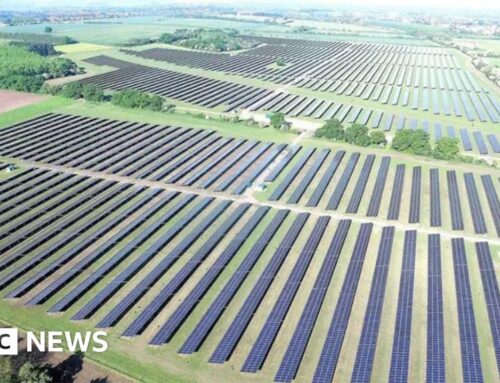Michigan DNR opts not to lease public land near Gaylord for solar energy
May 9, 2025
GAYLORD, MI – Michigan state officials said they will not lease 420 acres of public trust land near Gaylord for solar energy development following a four-month public comment period.
The state Department of Natural Resources announced on Friday, May 9, that it will not move forward with the proposed leasing after agency officials received more than 200 public comments and consulted with lawmakers and other interested groups.
The DNR said it will continue a pause on any new utility-scale solar projects on state land and may develop a transparent policy that defines clear site selection criteria. Agency officials did not immediately respond to a request for comments from MLive.
The solar company that initially inquired about the Otsego County site previously withdrew its interest.
Related: Another 1,000 acres of state forest considered ‘suitable’ for solar by Michigan DNR
The DNR’s decision on the Gaylord solar proposal comes after months of fierce public debate following news of the possible lease in January. Much of the acreage was previously clear-cut and replanted with red pine seedlings.
Critics of the proposal complained that deforestation of state lands for renewable energy generation would be an unacceptable loss of natural carbon sequestration from trees. Some bemoaned the loss of public access, wildlife habitat and forest regrowth, while others condemned the move as being financially motivated.
Proponents of the Gaylord solar proposal argued that such renewable energy development on public lands near high-voltage transmission lines may be the best use for those areas given the rapidly accelerating climate crisis, especially should other carbon-dioxide-gobbling forests be conserved elsewhere.
According to a summary report of public comments, it was nearly evenly split between support and opposition. Only a slight majority opposed utility-scale solar arrays on public lands.
The report says the public input was “valuable in understanding public sentiment toward utility-scale solar development on public lands and will help inform the next steps in the decision-making process.”
Recommendations from the public include the DNR creating a publicly accessible and transparent policy and procedure for locating utility-scale solar energy on public lands that defines clear site selection criteria. Also, public comments suggested public notification should be enhanced and officials should prioritize rooftops, parking lots, vacant farmland and unused or contaminated areas for solar energy.
State officials said leasing 4,000 acres of public land statewide for solar energy is part of the DNR’s plan to increase revenues for the agency and accelerate Michigan toward its goal of 100% clean energy by 2040.
Related: Worries arise over whether Michigan DNR will have public hearing on solar plan
The DNR manages 4.6 million acres of public lands and leases sites for multiple industrial uses, including oil and gas wells, pipelines, mines, gravel pits, cell phone towers and more.
Only two state land leases for solar energy are already signed with developers, one near Roscommon and another in Dickinson County in the Upper Peninsula. Both those sites include brownfields, including a gravel pit and small airport near Roscommon and an open-pit iron mine in the western U.P.
Sign up to receive Lake Effect, MLive’s weekly climate and environment newsletter.
Search
RECENT PRESS RELEASES
Related Post



